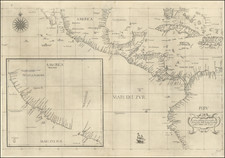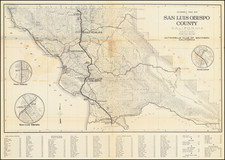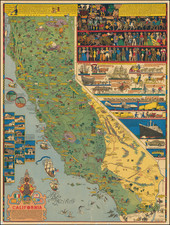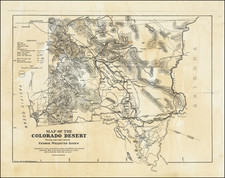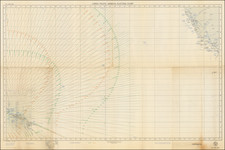Rare birdseye view of Madera, California and large map of the Lankershim Addition to Madera, plus neighboring addition. Includes extensive information regarding upcoming land sales and promotional information about Madera and the lands offered for sale on the verso:
www.raremaps.com/gallery/enlarge/20987a
Among the more interesting features on the map and view are the depiction of the flumes, ditches and mills which were a central part of the town's founding and development as a logging transporation hub for the San Joaquin Valley, connecting the logging operations in the Western Sierras to the Southern Pacific Railroad.
Madera was first created by the California Lumber Company to facilitate the transport of Lumber. The town is first mentioned in a story in the October 11, 1876 Fresno Expositor, which noted "The new town laid out by the California Lumber Company at the point where the company's flume intersects the railroad has been graced with the name of Madera - the Spanish word for lumber. It promises to be quite a flourishing town, and the demand for lots is great."
By January 1877, 25 dwelling had been constructed and the town was on its way. One of the earliest buildings constructed in Madera was Captain Mace's saloon on the future Yosemite Avenue, along with Madera's first hotel, which is shown in one of the vignettes offered here. Within a year, the California Lumber Company failed, as a result of the drought of 1877 and resulting panic throughout the entire San Joaquin Valley and its assets were acquired by a San Jose bank. On May 21, 1878, the officers of the bank, led by a man with the unusual name Return Roberts, incorporated the Madera Flume and Trading Company, which continued the logging operations. The Madera Flume and Trading Company would flourish for the next decade, assuring Madera of its viability as a town.









